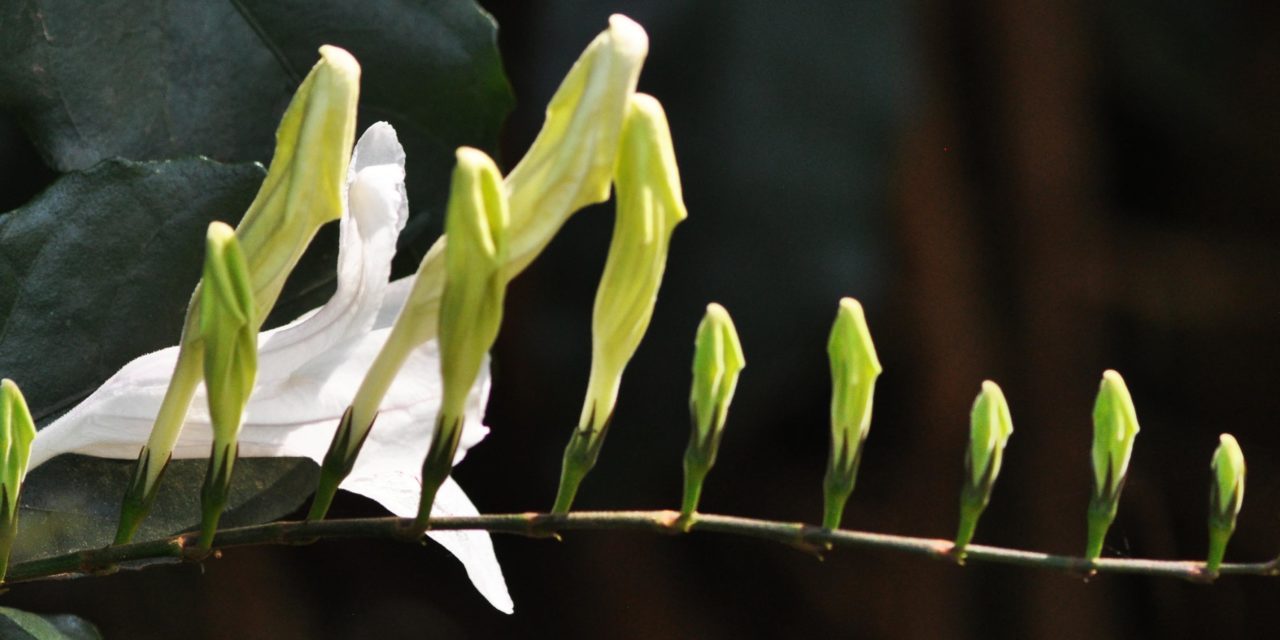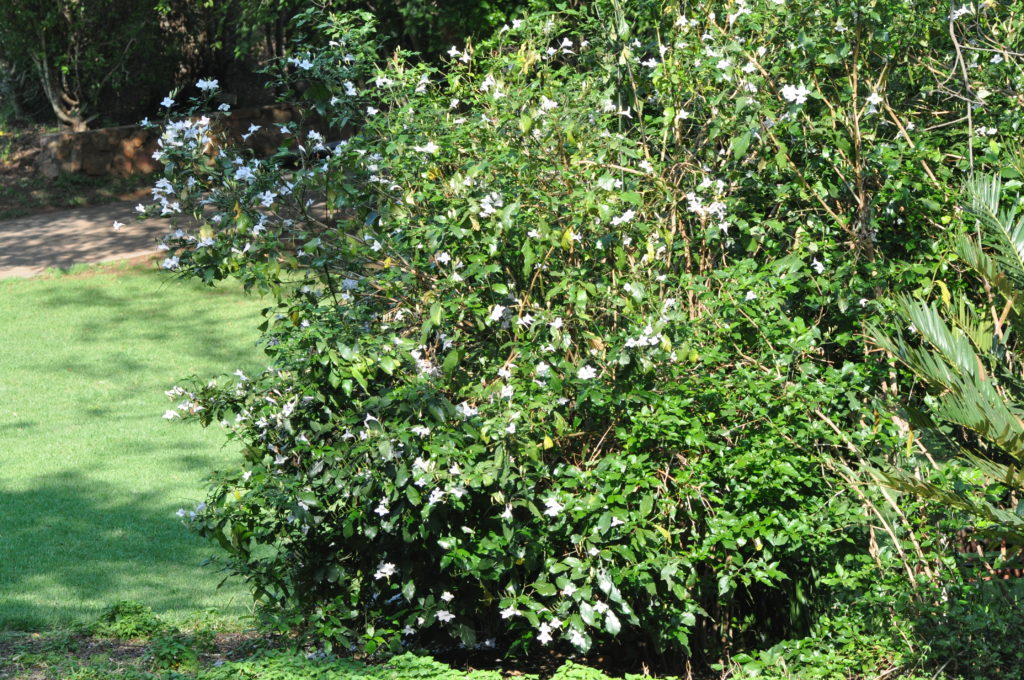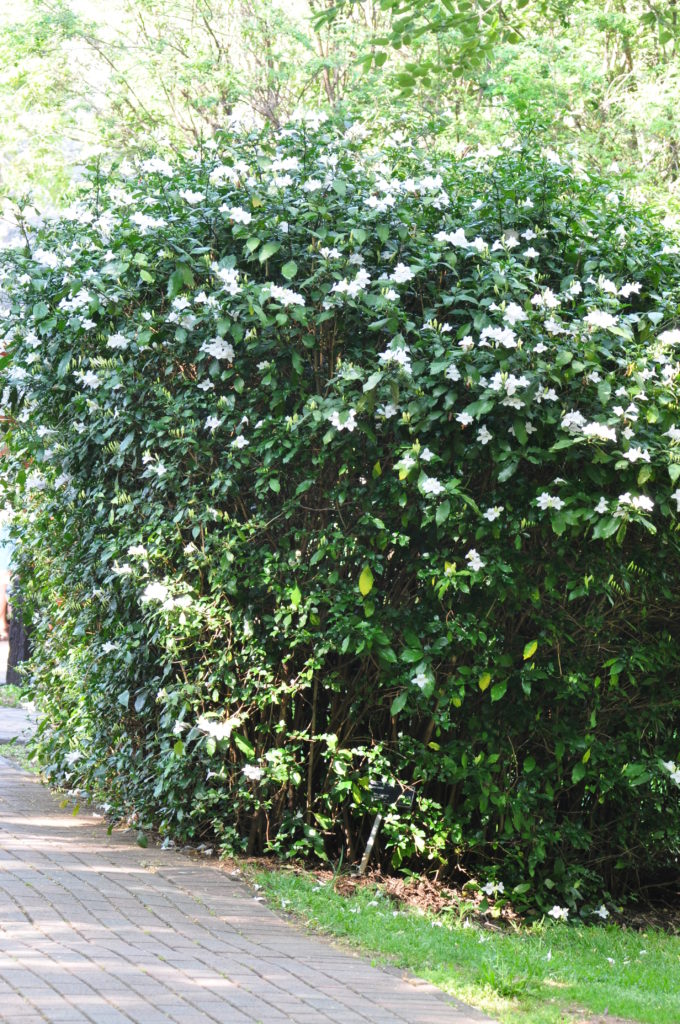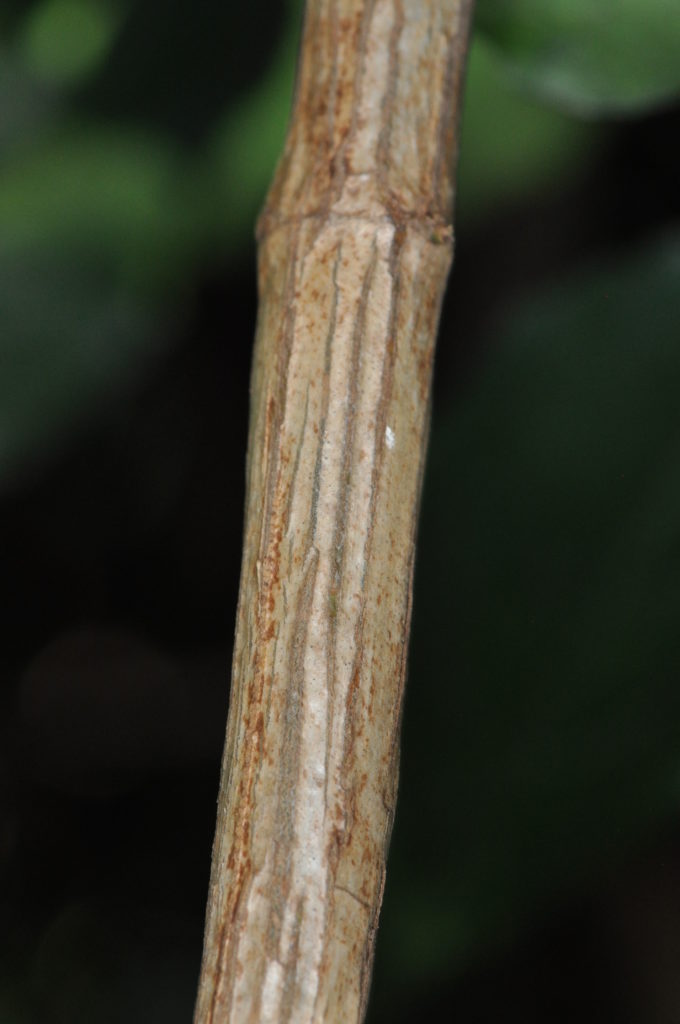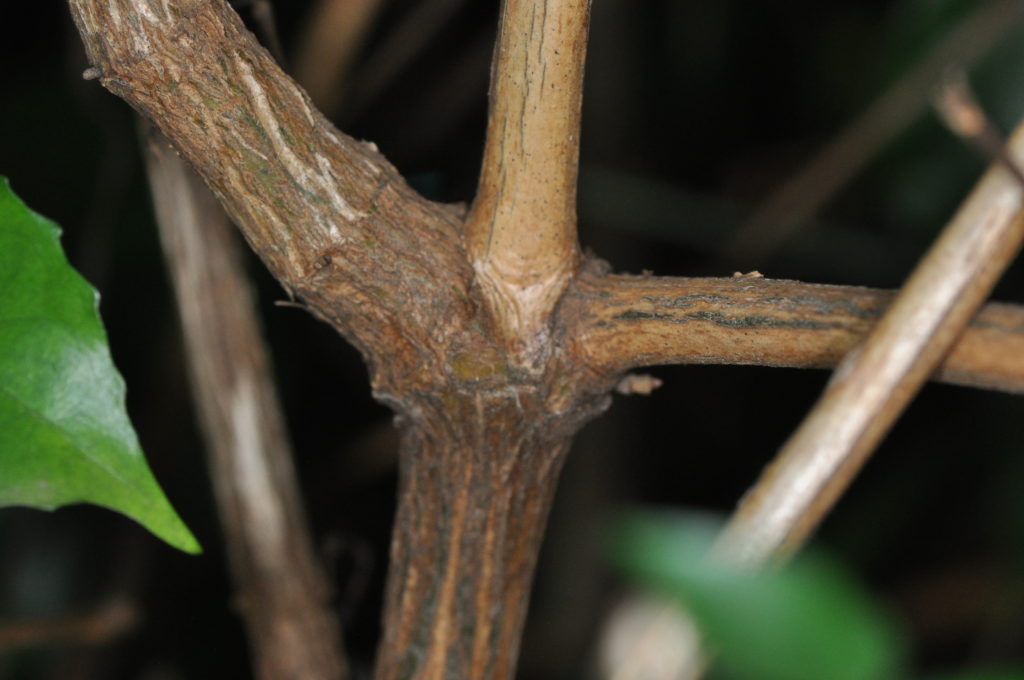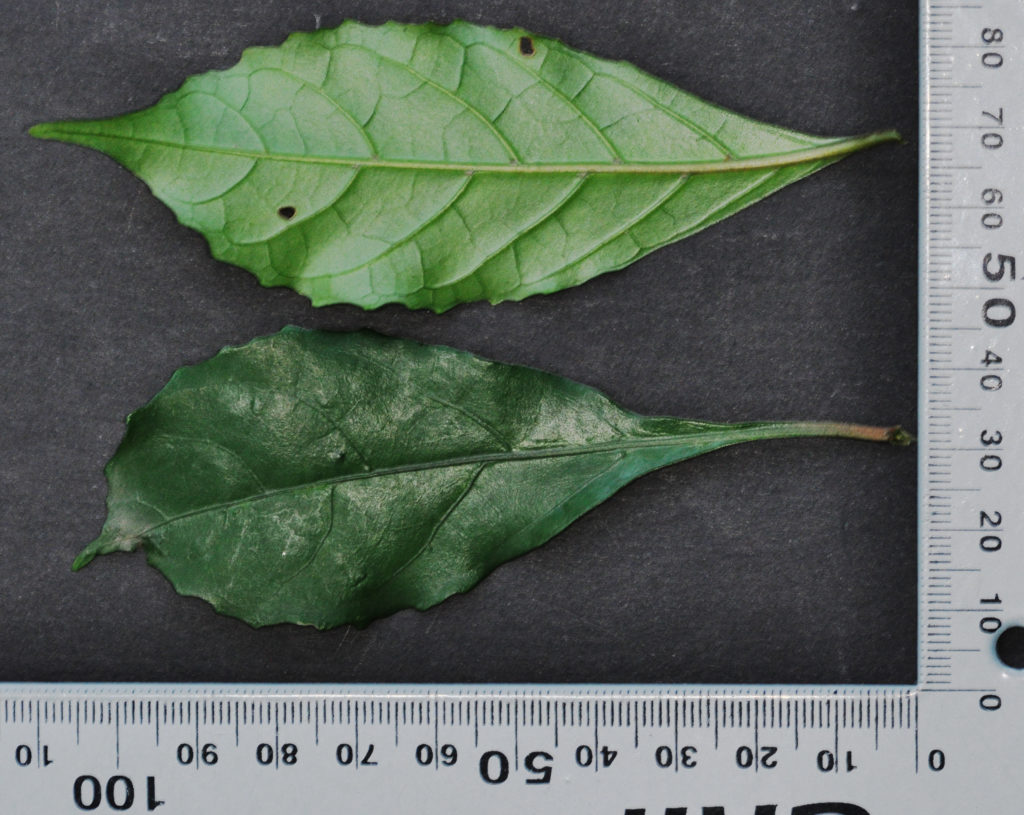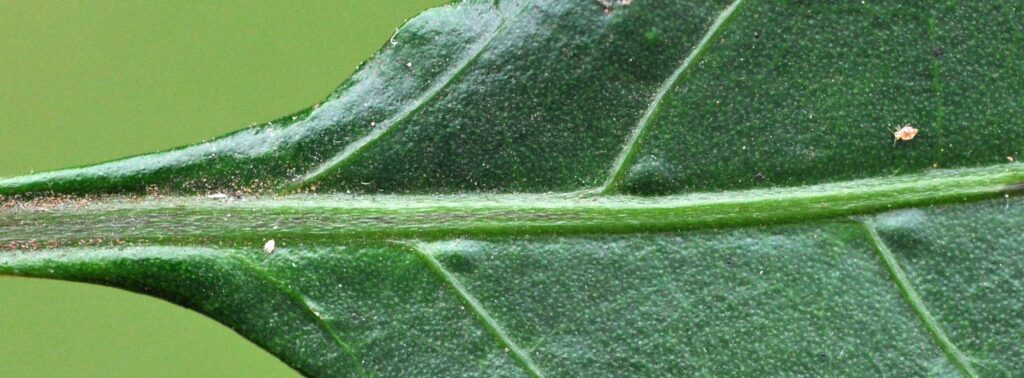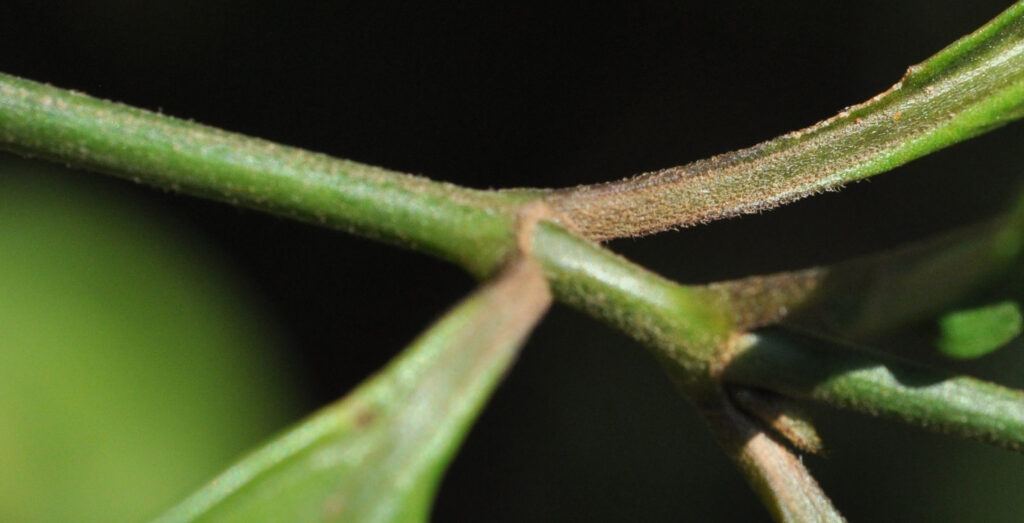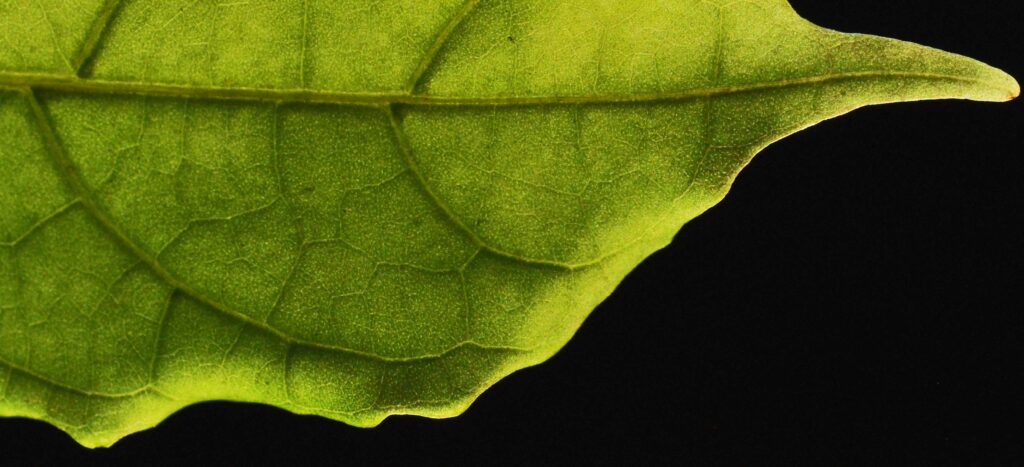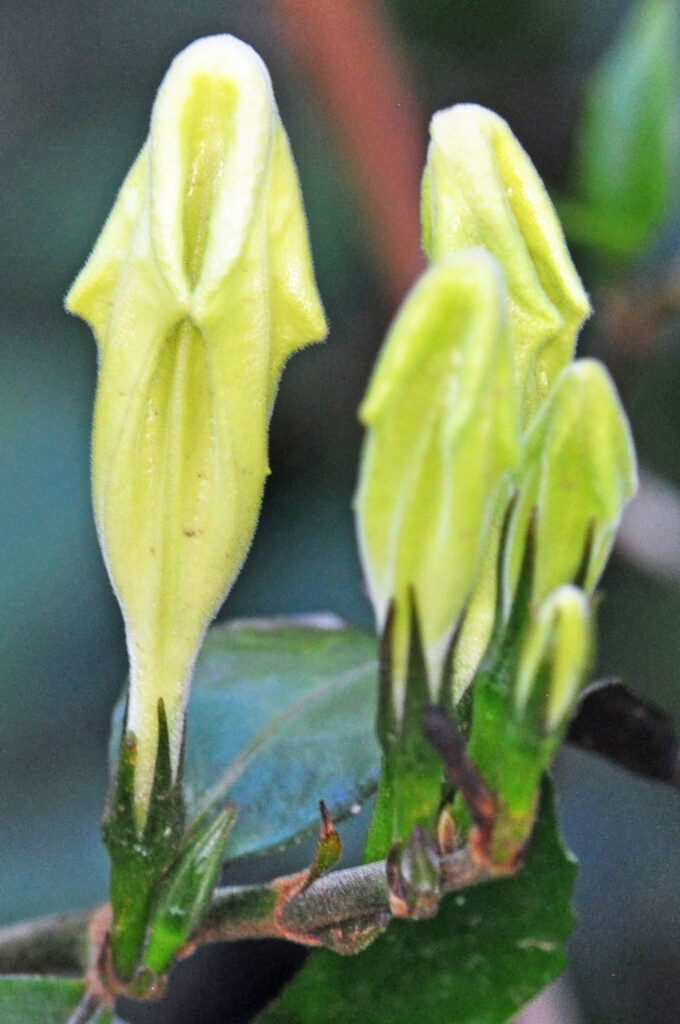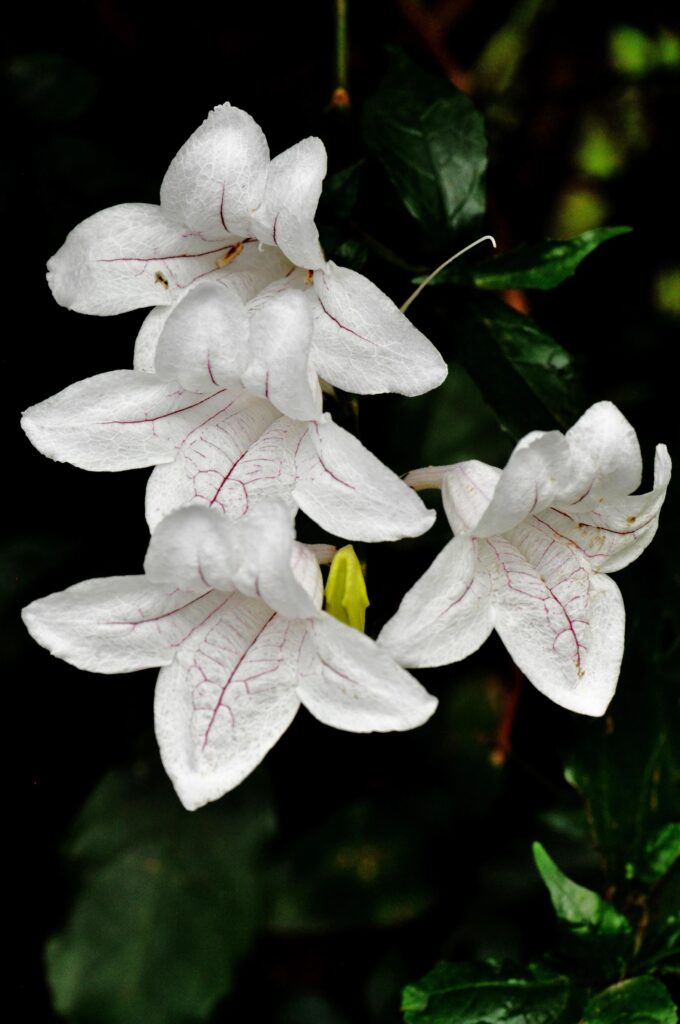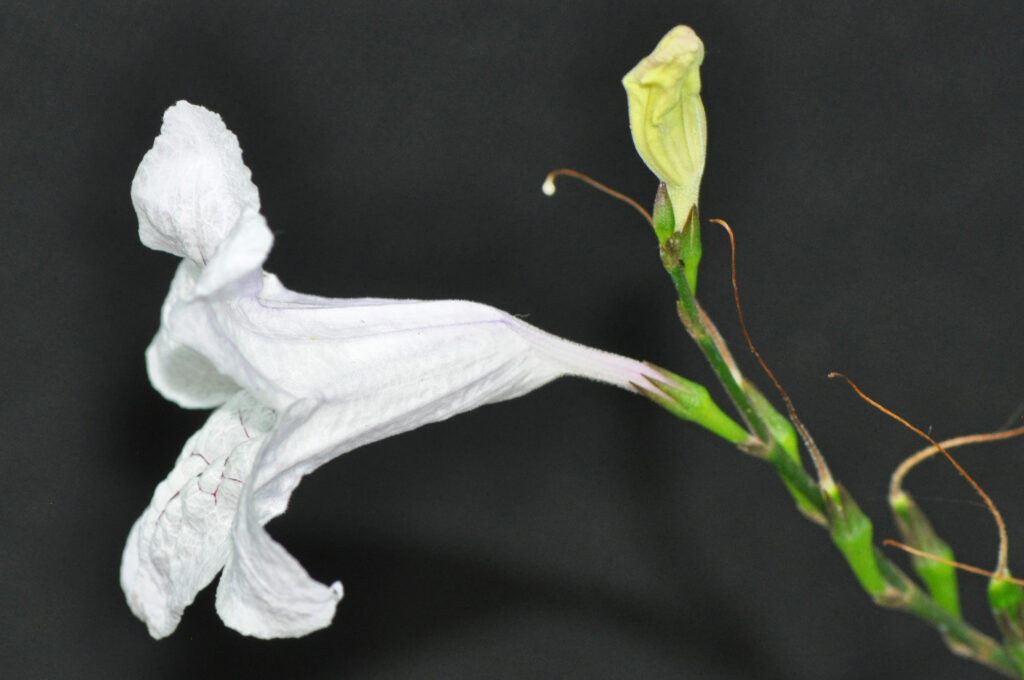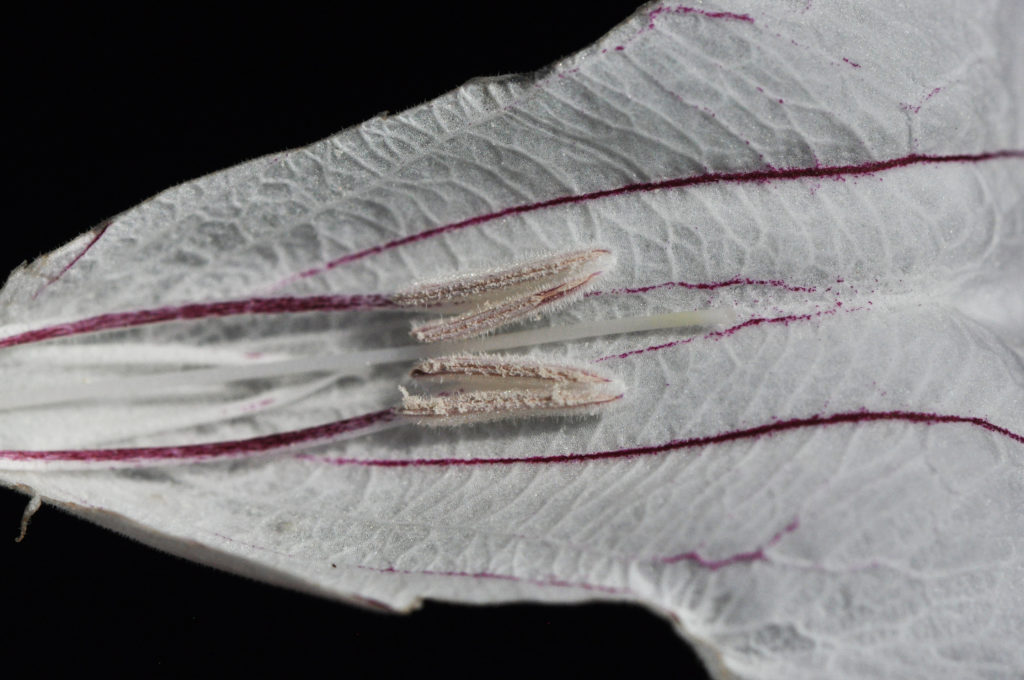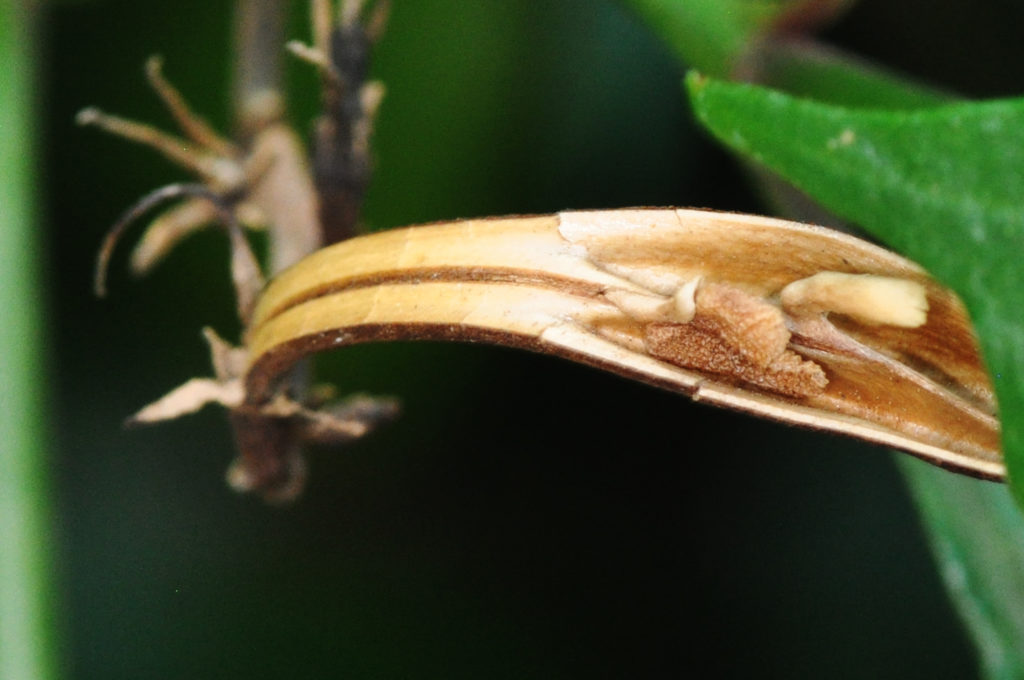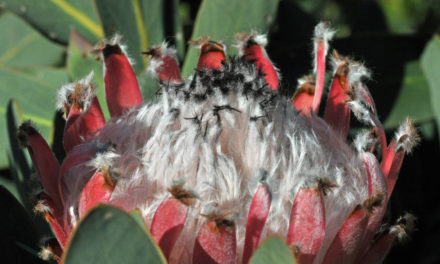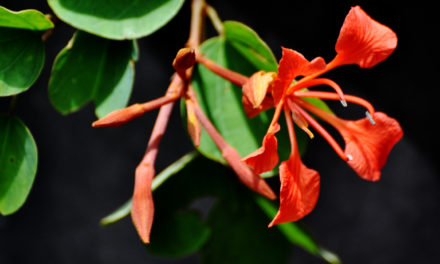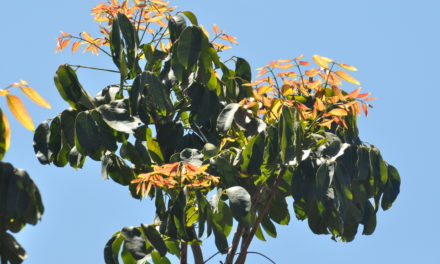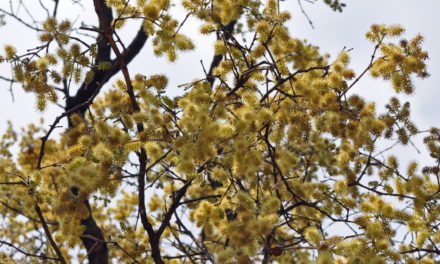General Info – summary
This plant is usually a shrub but may be a Tree up to 4m high. The simple Leaves are up to 17 x 4cm and domatia may be present. Large attractive, zygomorphic + bell-shaped white, purple veined Flowers in terminal racemes are bisexual: Male – 2 stamens + 2 staminodes: Female – single pistil with a superior 2-chambered ovary. Fruit: a club-shaped, explosively dehiscent woody capsule with 2 small, smooth seeds.
Description
Mackaya bella
SA Tree No. 681.1.
Common names: (Afr) bosklokkiesbos. (Eng) Forest bush, Forest Bell-bush, Mackaya, River bell. (isiZulu) Icaphozi, Umavuthwa, Umzwathi, Uphulule, Uzwathi. (siSwati) Umzwatsi. (Tshivenda) Mufhanza.
Family: Acanthaceae (The Acanthus family). This family has about 230 genera and 3 000 species found in almost all habitats. In southern Africa, there are about 42 genera and 350 species. All members have simple Leaves without stipules. Most are herbs, shrubs or twining vines. They are mostly entire. Inflorescences are mostly bracteate – subtending each flower. The Flowers are usually zygomorphic, bisexual with a nectariferous disc. The calyx usually shorter than the gamopetalous corolla, which has 1-2 lips. 4 Stamens arising on the corolla are usually present. The superior 2-locular Ovary contains a large embryo. Fruit is 2-locular and Seeds lack endosperm. Local tree genera on this website include Barleria, Justicia and Mackaya.
Name derivation: Mackaya Named after James Townsend Mackay – keeper of Dublin University Botanical gardens and author of Flora Hibernica – “The Wild Flowers Plants and Trees of Ireland”. bella – beautiful: referring to the flowers. Mackaya bella is the only species in the genus Mackaya.
Conservation: National Status: L C. (Least Concern). Assessed: 2006 (D.A. Kamundi).
Tree
This small Tree is up to 4m high. However, it is usually a multi-stemmed shrub (photos 605 & 820). The Branches are slender. On old stems, the pale greyish brown Bark is longitudinally fissured (photo 540). Between these dark grey ridges, the bark is light and spotted with red. In slender young branches, the bark is lighter and smoother (photo 542).
- 605 2017.10.24 Walter Sisulu NBG. Photo: David Becking.
- 820 2015.09.29 Walter Sisulu NBG. Photo: David Becking.
- 542 2015.04.14 Walter Sisulu NBG. Photo: David Becking.
- 540 2015.04.14 Walter Sisulu NBG. Photo: David Becking.
Leaves
The opposite (photo 669), elliptic to lance shaped Leaves are up to 17 x 4cm, usually evergreen and are simple (has a single blade which may have incisions that are not deep enough to divide the blade into leaflets). The wavy, dark green Blade is glossy above but lighter green and dull green below (photo 538). The Midrib and side veins are raised and clearly visible below (photo 538) and may be raised above. Vein details are more visible if the leaf is examined against a strong light (photo 666). Here the side veins do not quite reach the margin. Hair tuft Domatia occur in leaf axils of principal side veins. To the naked eye, the domatia appear as small bumps. They are intended to be used by organisms that have a symbiotic relationship with the plant and are developed by plants to form a shelter for small insects, mites (8-legged arthropods) and fungi (photo 982). The leaf Apex is acuminate (said of an acute apex whose sides are somewhat concave and tapers to a protracted point – photo 666) that is folded upwards forming a drip-tip. The Base is narrowly tapering and slightly decurrent (blades that partly wrap or have wings around the stem or petiole – photo 538). The Margin is undulate (wavy) even crenate (shallowly round-toothed or obtusely toothed or irregularly scalloped). The Petiole (leaf stalk) is up to 2+cm long (photo 538).
- 538. 2015/04/14 . Walter Sisulu NBG. Photo: David Becking.
- 982. 2018/03/07. Walter Sisulu NBG. Photo: David Becking.
- 669. 2019/09/20. Linden. Photo: David Becking.
- 666. 2019/09/20. Linden. Photo: David Becking.
Flowers
The impressive, individual bisexual Flowers are campanulate (shaped like a bell), have 2 bracts and develop in a lax terminal inflorescence that is up to 16cm long. Each inflorescence is a Raceme (a simple elongated inflorescence with stalked flowers that open in succession towards the apex – intro photo). Flowers all appear on the same side of the Peduncle (stalk of flower cluster – intro – photo). The slender flowers are up to 5cm long to 6cm in diameter and are zygomorphic (floral parts are unequal in size or form so that the flower is capable of division into essentially symmetrical halves by only one longitudinal plane passing through the axis). Two Bracts (much reduced specialized leaf) are present and are subulate – a part that is slender and tapering to a point. Two Bracteoles (a secondary usually smaller leaf-like bract associated directly with flowers) are also present. The regular and short hairy Calyx has 5 Sepals with thin lobes that extend almost to the tubular base (photo 50). The irregular Corolla has a base that forms a tube up to 4cm long before becoming bell shaped as it splits into lobes. The open flower has attractive delicate pale mauve to white petals ending in 2 spreading lips. The upper lip has 2 Petals and the lower lip has 3 petals – with the largest in the centre (photo 164). Here the Veins on the petals are visible, especially the maroon ones on the inside of petals (photos 164 &.222).
There are 2 fertile Stamens (photo 222) which are attached to the base of the expanded section of the corolla tube that do not protrude beyond the corolla tube (photo 823). The purple linear Filaments (photo 222) both end in Anthers that contain 2 long Thecae (pollen sacs) forming an inverted V-shape which is attached to filament at the base of the V (photo 222). Two mainly white Staminodes (blunt ending sterile stamens) are also present (just visible in photo 222 – ending below the anthers). There is a single Pistil (a unit of the Gynoecium, the female element of the flower, composed of the Ovary, Style and Stigma) with a superior Ovary that is 2-chambered with 1 or 2 ovules in each. The white Style (photo 222) extends between and beyond the anthers – barely reaching the end of the corolla mouth. (Aug-Dec).
- 50. 2014/09/30. Walter Sisulu NBG. Photo: David Becking.
- 164. 2014/10/07. Walter Sisulu NBG. Photo: David Becking.
- 823. 2015/09/29. Walter Sisulu NBG. Photo: David Becking.
- 222. 2017/09/25. Home. Photo: David Becking.
Fruit
The narrowly club-shaped Fruit is a woody Capsule (a dry fruit resulting from the maturing of a compound ovary with more than 1 carpel). It is up to 3,8cm long and supported by a short stalk. The dark brown capsule dehisces explosively into 2 valves which are lighter on the inside and curl backwards in the process (photo 117) ejecting 2 small, smooth Seeds and leaving behind the persistent Calyx (photo 115). (Oct-Jan).
- 117. 2016/01/05. Walter Sisulu NBG. Photo: David Becking.
- 115. 2016/01/05. Walter Sisulu NBG. Photo: David Becking.
Distribution & Ecology
These Plants are able to survive in and at the margins of forest shade up to an altitude of 2 000m. They occur naturally along the north Eastern Cape Coast, close to the border with KwaZulu-Natal, Limpopo, Mpumalanga e.g., Kowyn’s pass, and Eswatini (Swaziland). They are rhus Endemic (restricted to a particular geographic location) in southern Africa. Flowers attract carpenter bees. The UV (ultra-violet) light reflectance from purple lines on petals helps to guide carpenter bee pollinators. This is especially relevant in darker forest conditions. Carpenter bees have a shiny abdomen whereas the abdomen in bumblebees is covered with dense hairs. The larvae of the dark blue pansy Butterfly with a characteristic large dark blue spot, Junonia oenone feed on the leaves of this plant and other members of the family Acanthaceae. In the Ongoye Forest (150km north of Durban from 200 to 460m above sea level), the Kloof Frog (Natalobrachus bonebergi) may lay its egg cluster on branches of these and other trees that overhang water.
Ethnobotany
The dry Wood can be used to kindle fire by friction. Other trees used for this purpose include Cordia caffra, Clerodendrum glabrum, Brachylaena elliptica, Ficus capensis, Commiphora species and Salix species. Mackaya bella is a good garden plant and may grow from seeds or cuttings. This tree thrives in the shade, but the most attractive flowers appear when situated in some sun. Plants are somewhat sensitive to severe frost. Parts of the plant are used in traditional medicine.
References
Boon, R. 2010. Pooley’s Trees of eastern South Africa. Flora and Fauna Publications Trust, Durban.
Coates Palgrave, M. 2002. Keith Coates Palgrave Trees of Southern Africa, edn 3. Struik, Cape Town.
Kamundi, D.A. 2006. Mackaya bella Harv. National Assessment: Red List of South African Plants version 2020.1. Accessed on 2023/08/25.
Lawrence, G. H. M, 1951. Taxonomy of Vascular Plants. The Macmillan Company, New York. Tenth Printing 1965.
Palmer, E. & Pitman, N. 1972. Trees of southern Africa. Balkema, Amsterdam, Cape Town.
Schmidt, S. Lotter, M. & McCleland, W. 2002. Trees and Shrubs of Mpumalanga and the Kruger National Park. Jacana, Johannesburg.
van Wyk, B. & van Wyk, P. 1997 Field guide to Trees of Southern Africa. Struik, Cape Town.
http://www.bluegnu.co.za/3768-blue-pansy.php
https://en.wikipedia.org/wiki/Junonia_oenone
http://www.plantzafrica.com/plantklm/mackayabella.htm
http://operationwildflower.org.za/index.php/albums/trees/mackaya-bella-797
http://posa.sanbi.org/flora/browse.php?src=SP
https://www.britannica.com/plant/Acanthaceae
https://academic.oup.com/aobpla/article/11/5/plz057/5572641

